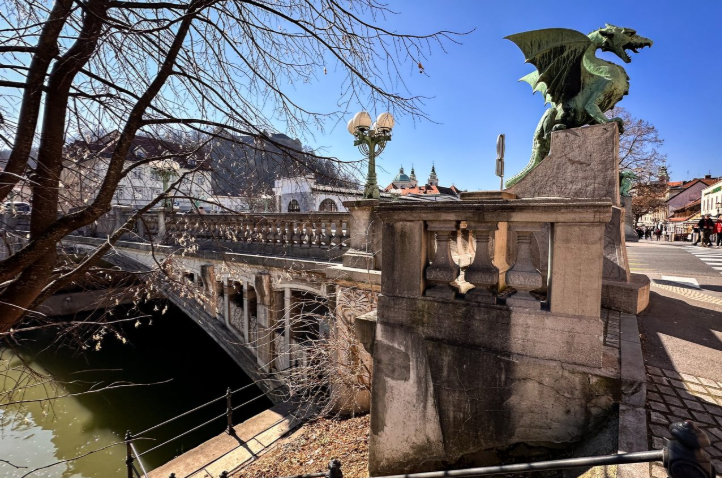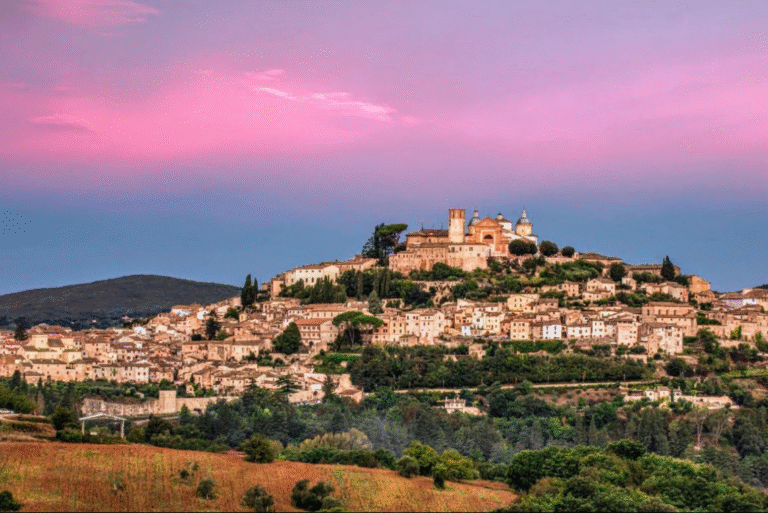Ljubljana’s Green Capital: Bridges, Dragons, and the Soul of Slovenia
Ljubljana, the capital of Slovenia, is one of Europe’s most enchanting yet underrated cities. With its lush green spaces, meandering river, and charming medieval old town, Ljubljana blends natural beauty with cultural sophistication. Often called “Europe’s Green Capital” for its pedestrian-friendly streets and commitment to sustainability, the city offers a refreshing escape from the hustle and bustle of larger capitals. The iconic Dragon Bridge, a symbol of Ljubljana’s mythical past, connects the city’s historic and modern sides, while Ljubljana Castle stands as a testament to its medieval roots. Whether strolling along the Ljubljanica River, exploring the vibrant café culture, or delving into Slovenia’s rich history, visitors will discover that Ljubljana is a city full of character, creativity, and soul. This picturesque capital invites travelers to slow down, embrace its relaxed atmosphere, and experience the unique blend of Central European and Mediterranean influences that shape its identity.
The Iconic Bridges of Ljubljana: A City Connected by History and Design
Ljubljana is a city built around its river, and its numerous bridges play a crucial role in both its history and aesthetic appeal. The Ljubljanica River, winding through the heart of the city, is lined with charming cafés, historic buildings, and lively markets. These bridges, each with its own story, create a sense of connection between the past and present, tradition and innovation.
Perhaps the most famous of these is Dragon Bridge, an Art Nouveau masterpiece guarded by four imposing dragon statues. These creatures, symbols of strength and courage, are deeply embedded in the city’s folklore and mythology. According to legend, Jason and the Argonauts passed through Ljubljana on their journey, slaying a dragon that once terrorized the region. Today, the bridge stands as one of the city’s most recognizable landmarks, a beloved icon for both locals and visitors.
Another essential crossing is the Triple Bridge (Tromostovje), a unique architectural feat designed by the renowned Slovenian architect Jože Plečnik. The bridge consists of three separate pathways, elegantly fanning out across the river, seamlessly linking the old town to the modern city. Plečnik’s influence on Ljubljana is profound, with his designs shaping much of its urban landscape. His vision transformed Ljubljana into a harmonious blend of classical elegance and modern functionality, making it one of the most architecturally cohesive cities in Europe.
Not far from the Triple Bridge, the Cobblers’ Bridge (Čevljarski Most) provides another picturesque passage over the Ljubljanica. This historic bridge, once home to shoemakers’ workshops, now serves as a popular meeting point and a stage for street performers and musicians. As the sun sets, the city’s bridges become illuminated, casting reflections on the river that enhance Ljubljana’s fairy-tale ambiance.

Dragons, Castles, and Legends: The Mythical and Medieval Heart of Ljubljana
No symbol is more closely associated with Ljubljana than the dragon. Representing power, wisdom, and protection, the dragon can be found on the city’s coat of arms, flags, and countless souvenirs. Beyond its mythical significance, Ljubljana is also steeped in medieval history, with Ljubljana Castle serving as the crown jewel of its historic core.
Perched on a hill overlooking the city, Ljubljana Castle has stood for nearly a thousand years, evolving from a medieval fortress into a cultural and historical center. Visitors can explore its towers, dungeons, and exhibits detailing Slovenia’s past, while the castle’s viewing platform offers breathtaking panoramic views of the city and the surrounding Julian Alps. The castle’s history is rich with tales of battles, rulers, and strategic significance, making it an essential stop for history enthusiasts.
At the foot of the castle hill, the Old Town unfolds with narrow streets lined by Baroque and Renaissance buildings, each with its own story. The Town Hall, with its Venetian-style architecture, anchors the historic center, while nearby, the Cathedral of St. Nicholas impresses with its green dome and intricate frescoes. Walking through this part of the city, visitors encounter hidden courtyards, artisan shops, and lively markets, creating a timeless atmosphere where history and everyday life intertwine.
Ljubljana’s connection to folklore extends beyond its dragons. The city’s legends tell of hidden treasures, secret tunnels beneath the castle, and even an underground lake said to be guarded by mysterious creatures. These stories add to the city’s mystical charm, making it feel like a place where history and mythology exist side by side.

The Green Soul of Ljubljana: Sustainability, Outdoor Living, and Local Culture
Ljubljana’s designation as Europe’s Green Capital is not just a title—it is a way of life. The city has taken impressive steps to reduce traffic, promote clean energy, and preserve its natural environment, making it one of the most sustainable capitals in the world. Its pedestrian-only city center allows for relaxed exploration, with public spaces designed for people rather than cars.
Tivoli Park, Ljubljana’s largest green space, serves as the city’s natural retreat. Spanning across rolling hills, botanical gardens, and tree-lined pathways, the park is perfect for a morning jog, an afternoon picnic, or simply a quiet escape from urban life. Within the park, the Tivoli Mansion houses an art gallery featuring Slovenian and international artists, adding a cultural touch to this natural oasis.
The Ljubljanica River itself is a focal point for outdoor activities. Kayaking, paddleboarding, and boat tours provide alternative ways to experience the city’s beauty, while riverside cafés and open-air markets contribute to Ljubljana’s lively social scene. The Central Market, designed by Jože Plečnik, is a hub of local produce, artisanal cheeses, and Slovenian delicacies, where visitors can sample everything from honey and truffles to traditional pastries like potica.
Ljubljana’s commitment to sustainability extends to its culinary scene, with many restaurants emphasizing farm-to-table dining. Local eateries celebrate Slovenia’s diverse flavors, blending influences from Mediterranean, Alpine, and Balkan cuisine. Traditional dishes like kranjska klobasa (Carniolan sausage) and štruklji (rolled dumplings with various fillings) showcase the country’s rich gastronomic heritage.
The city’s cultural calendar is equally vibrant, with festivals, concerts, and artistic events taking place year-round. The Ljubljana Festival brings classical music performances to historic venues, while the Ana Desetnica Street Theatre Festival transforms the city into an open-air stage for performers from around the world. Whether enjoying live music in Congress Square or discovering contemporary art in the Metelkova district, visitors will find that Ljubljana is a city that values creativity and community.







